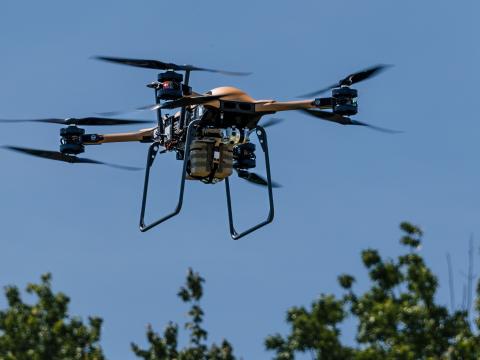Bright Future for Marines' Solar Power Plans
The U.S. Marine Corps is moving forward with two existing solar power programs helping to reduce energy dependence and lighten the physical load weighing down troops.
The U.S. Marine Corps is moving forward with two existing solar power programs helping to reduce energy dependence and lighten the physical load weighing down troops.
Defense Editor Max Cacas discusses the next-generation technology decreasing the need for risky energy sources in his SIGNAL Magazine article, "Solar Powers Missions and Saves Lives."
Several years ago, the Marines began exploring renewable energy sources, such as solar, as part of a service-wide plan to cut reliance on nonrenewable energy sources in half by 2025. The service developed this initiative after commanders in Iraq and Afghanistan reported that dependence on traditional energy supply lines put Marines on the front lines at risk. Electrical generators powering forward command posts required dangerous convoys to get diesel fuel, and batteries account for up to 20 percent of the weight carried by Marines.
Gen. James F. Amos, USMC, Marine Corps commandant, recognized that the service needed to become less dependent on these traditional sources:
"To maintain our lethal edge, we must change the way we use energy"As a result of the new energy plans, the Marines moved forward with two different systems to support solar energy. First: the Solar Portable Alternative Communications Energy System (SPACES). The hybrid system converts electrical energy from solar panels or field vehicle batteries into useful energy for communications equipment. It is controlled by the StarPower module, which is a lightweight, software-based management device that adapts to meet the needs of individual Marines. Currently, more than 1,600 SPACES have been fielded, and the Marines issued a solicitation in February for a second generation, which could mean 5,000 more solar energy units for the service. The second solar energy solution is the Ground Renewable Expeditionary Energy System (GREENS), which is a panel of solar arrays with rechargeable batteries powerful enough to support an entire forward combat headquarters when combined in clusters. While recharging a battery used to require a trip back to a battalion headquarters with larger generators, GREENS allows for recharging batteries at the company or platoon level. The Marines also issued a solicitation for generation two of this program.



Comments